- Home
- Alec Waugh
The Sugar Islands
The Sugar Islands Read online
The Sugar Islands
A COLLECTION OF PIECES WRITTEN
ABOUT THE WEST INDIES BETWEEN
1928 AND 1953
by
ALEC WAUGH
CONTENTS
Foreword
BACKGROUND
Gateway to the West Indies
Martinique
The Buccaneer
The Black Republic
An Historical Synopsis
CHARACTERS
TheJudge
Obeah
A Beachcomber
A Creole Crooner
SNAPSHOTS
The West Indian Scene
Au Revoir, Martinique
Montserrat
Barbados
Anguilla
Trinidad
St. Vincent
Tortola
ISLANDS
The U.S. Virgin Islands
Saba
Antigua
An Island to be Explored
‘Typical Dominica’
Envoi
SOURCES
Foreword
In this book I have collected the various pieces that I have written about the West Indies in travel books and magazines. I have been visiting the islands for thirty years. Several of them are very different now from what they were in 1928; several of my prophecies have not been fulfilled; on several points I have changed my mind; but I have not tried to bring this book up to date. The whole point of a travel book is that it should be dated.
Travel books are not a profitable form of writing; their sale is usually small but they have for the author the satisfaction of possessing reference value. They hold their place on library shelves and are consulted by the student and the traveller long after novels that enjoyed a brief bright summer are utterly forgotten. I do not suppose that it would pay a publisher to reissue today Froude’s English in the West Indies, Treeves’s Cradle of the Deep, or Rutter’s If Crab No Walk, but those three books provide indispensable research material. It is of value to learn how certain places struck certain people twenty, fifty, eighty years ago. I have therefore left these pieces as I wrote them except for a few excisions. One or two repetitions will still be found, because I felt that the individual pieces would lose their identity if I pruned them too severely. I have dated each chapter, adding an occasional note and including a few interpolations explaining how I got my material. The interpolations are printed in italics.
On no issue has the situation changed more rapidly during the last few years than that of colour. It will change even faster in the future. Racial discrimination is practically at an end, but colour itself has not ceased to be a problem; and though it may cease to be a problem, it will remain, in my opinion, a consideration. The roots have gone very deep. I have inserted an occasional note to the effect that a certain situation would not exist today, but I have left untouched most of the paragraphs that dealt with colour, because I believe that it will help the student of the future who turns these pages in a library, as I myself have turned those of Froude, to be able to say, ‘This is how it struck a certain kind of Englishman in 1928, ‘38, ‘48, and ‘58.’
The name Eldred Curwen appears often in these pages. He died in London in September 1955 at the age of fifty-two. He had a peculiar upbringing. His family—its country seat was Workington, in Cumberland—was referred to in a gossip paragraph as ‘old enough to make the Plantagenets seem parvenus’. His mother died when he was young, his elder brother was killed in the First War and his father never recovered from the shock, becoming a recluse and taking no interest in his younger son. Eldred had no real education. He was superannuated from Shrewsbury, and was allowed from the age of sixteen to wander about Europe on a monthly allowance of thirty pounds. He spoke colloquially French, German, Spanish, and Italian, but never grasped the grammar of any language. He would, for instance, spell the contraction of’did not’ ‘dident’. ‘People understand what I mean,’ he would retort. At the age of twenty-one his allowance was raised to a thousand pounds a year. A little later he broke the entail on Workington in favour of his sister’s children in return for an annuity of two thousand pounds. In 1931, on his aunt’s death, he inherited a charming Victorian villa in Antibes, which he made his base.
He was short, red-haired, well-built; he was a keen skier and a good tennis player. Though he was basically uneducated, he was a man of sound, practical common sense. He never did a day’s work but he organized his own life effectively. Whereas most men are concerned with the earning of an income, he was concerned with the spending of one. His problem was how to get the most out of an income, first of thirty pounds a month, later of a thousand and, finally, of two thousand a year. He never got into debt.
He was one of the happiest and gayest people I have ever known. As a friend he was affectionate, loyal, and unselfish. He was a wonderful companion. For me, as for very many others, the world is a different place without him.
BACKGROUND
Gateway to the West Indies
Martinique
The Buccaneer
The Black Republic
An Historical Synopsis
Gateway to the West Indies
from THE SUNLIT CARIBBEAN
Written in 1947
Something always remains out of a love affair. Usually the last thing one would expect. A year ago, a man whom I have known for a quarter of a century, with whom for five or six years I was on terms of quite close friendship and with whom, nowadays, in the course of most years I arrange at least once to lunch or dine, asked me if I had been surprised the first time he invited me to dinner.
It had been in the early ‘twenties. I was four or five years younger than he was. We had nothing very obvious in common. He was a Treasury official. He was not a footballer or a cricketer. As members of the Savile Club, we met casually two or three times a month. There was no particular reason why he should have invited me to a dinner which marked—we could recognize it now in retrospect—the start of our real friendship. Had I been surprised when he invited me? ‘Yes,’ I said. ‘I suppose I was.’
He smiled. ‘You’ll be more surprised when I tell you why I did. I had heard that you were a good friend of Phyllis’s. I had just fallen for her, crazily. I thought it might do me good to have you saying nice things about me to her. I read in The Times this morning that she is a grandmother. I don’t suppose I’ve thought of her ten times in the last fifteen years. It’s strange to reflect that our friendship, yours and mine, is the only thing that survives now out of all that emotional disturbance.’
We have most of us had, I fancy, an equivalent experience. And when an interviewer recently asked me what it was that had first attracted me to the Caribbean, I was forced to remind myself, a little ruefully, that this interest of mine in the West Indies is all that is left alive now in my life of an entanglement on whose account at the end of the nineteen-twenties I travelled many thousand miles.
It was incidentally, without premeditation, as part of a quite different plan, that I saw the West Indies first.
In the spring of 1926 I went round the world. I travelled by the Messageries Maritimes. And in view of the difficulty and cost of travel now, it is pertinent to recall that a ticket that sent me first-class round the Mediterranean touching at Greece, Turkey, and the Levant; thence from Port Said via Colombo to Malaya; from Singapore, calling at the Dutch East Indies, to the Australian ports; from Sydney northwards across the Pacific to the New Hebrides, Tahiti, Panama, the West Indies, and finally Marseilles; a ticket that included twenty weeks’ board and lodging, cost £166.
For a writer with no responsibilities or overhead expenses, who was able to earn a thousand pounds a year, large-scale travel was, in the ‘twenties and ‘thirties, a definite e
conomy. When I have mentioned the places I have been to, I have often been asked incredulously how on earth I could have paid the passage. My answer has been that it was only because I was travelling half the time that I was able to run a flat and entertain my friends in London. During my round-the-world trip I spent during nine months, without being austerely economical, under five hundred pounds.
I have described that journey in another book, Hot Countries, telling how, like so many travellers before me, I decided at the first sight of Tahiti to let my ship sail on without me; telling in the form of fiction how gradually I came to realize that Tahiti, whatever it may have been in the days of Melville, was no place in the nineteen-twenties for a young man of ambition to take root in; telling how I decided suddenly, in an afternoon, to get back to England by the quickest and shortest route across America, not waiting for the French boat by which I had a ticket. I did not tell, however, in Hot Countries, how on the way up to San Francisco all my plans for settling permanently in England became reversed and how in the smoke-room of the Manganui I made a rendezvous for August in Tahiti.
Six months later I started back for the Pacific in the Louqsor, a converted seven-thousand-ton French troopship which carried about sixty mixed-class passengers. She sailed from Marseilles. She was bound for New Caledonia, through the Panama Canal. Tahiti was six weeks away. At the head of the gangplank a small black board announced that we would leave at 11.30 for Pointe à Pitre.
‘Where’s Pointe à Pitre?’ I asked.
‘Guadeloupe. It’s the chief port there.’
But I was not interested in Guadeloupe. I barely knew of its existence. I remembered it vaguely from history lessons as one of the islands that kept changing hands during the French wars of the eighteenth century. Guadeloupe, like Colon, was a station upon a six weeks’ journey. When the notice board announced eighteen days later that we would dock on the following afternoon, such anticipation as I felt was no more than the corollary to eighteen landless days. I wanted to feel my feet on concrete, I wanted to loiter before shop windows, to ‘consult’ a menu, to patronize a ‘dancing’. It was in that mood that I went ashore; and appropriately enough, the only recordable incident that I can recall about the next ten hours is that I first drank Lanson then.
The next day we docked at Martinique.
It was a cloudless July morning. The sky looked very blue against the grey-green tamarinds. The shrubs lining the road down which we sauntered from the quay were studded in pink and white with the bell-mouthed hibiscus. There was a broad, grass-grown savannah flanked with mango trees. In its centre was a white statue set about with palms, with royal palms that stood straight and tall like sentries. On two sides of the savannah was the irregular broken skyline of two- and three-storied buildings; clubs and hotels and shops and cafés; some wooden and some brick; some with fresh-painted shutters; others with blistered woodwork and warped frames. On the edge of the grass a succession of one-man stalls offered soft drinks and biscuits.
The tourist season for the Caribbean ends in April. The summer is popularly supposed to be made as intolerable by heat as is the autumn by rain and wind. But I do not remember it as being particularly hot. Everything was bright and gay; there was colour and animation along the streets. Many of the women wore the native dress, wide-skirted about the ankles, tight-bodiced, with a silk handkerchief about the shoulders and a smaller silk handkerchief knotted in the hair, with the ends pointing upwards. The French officials looked very dapper and self-important in their white ducks and high-crowned, mushroomlike sun helmets; the mulatto men, very elegant, in their silk shirts and gaudy ties and tightly waisted suits. There was a great deal of noise. Cars were honking at every corner. Range after range of jagged mountains, indented with the pale blue of bay and estuary, rose like a bastion behind the harbour. Over the porch of the Hotel de France [the Hotel de France has been displaced by a large Odeon-lighted cinema. The savannah at Fort de France would not affect the modern traveller in the same way today. Too many cars are parked round it. It looks like a garage.] the tricolour was flying. There was an air of the Midi about it all. And across the grass, the white statue in its circle of guardian palms gave a dignity and significance to the scene. Whom was it to? I asked.
My question was greeted with a laugh. Had I forgotten that Josephine was born here?
I strolled across to it.
So many pens have described the details of that statue—the long, flowing robes of the First Empire, the high waist, the bare arms and shoulders, the hand resting on a medallion that bears Napoleon’s profile, the head turned southwards to the place of her birth, Trois Ilets—so many magazine articles have been adorned with its illustration that it is hard for the modern traveller to assess its intrinsic value as a work of art. It is hard to dissociate it from its subject: it is hard not to react against its overpraise; it is easy to dismiss it scoffingly as ‘the kind of thing that you would see in half a hundred cemeteries’. Moreover, it is set upon so high a pedestal that it is impossible to get a level and close-up view of it. I have never seen a photograph that did it justice; and it is possible that if you were to see that statue in a London gallery, you would consider it of small account. Seen, though, in Martinique, in its own setting, from a distance of forty yards, it is not easy to be unmoved by it. As I saw it on that first July morning, white against the green of the tamarinds and mangoes, it seemed to stand there on its pedestal, in the centre of the savannah, in the circle of its palms, as a symbol, as a tribute to the romantic destiny not only of a woman, but of an island’s life. ‘This must be a real place,’ I thought.
The Louqsor was to sail at four. It was close upon six before she did. No French cargo boat, I was told, has ever sailed punctually from Fort de France or made full speed next day. No French sailor, however he may be warned, can appreciate that a liquid which is served as a vin de table at five francs [The value of the franc at this time was a hundred and twenty to the pound.] the bottle, can have the potency of rum. The police have a busy afternoon on boat days rounding up the crew.
We leant, the purser and I, against the taffrail watching the stragglers being brought in one by one, while the women who had coaled the ship—the charbonnières—stood beside their baskets roaring with laughter, their teeth showing very white against their soot-grimed faces.
The purser shrugged.
‘La Martinique,’ he said. ‘There is no place like it.’
‘How about Tahiti?’
He shrugged again. ‘Tahiti is, how shall I say, hors concours. You can make no comparison. There is only one Tahiti. But La Martinique. She is special too. Yes; she is very special.’
Fifteen months later I was to remember that conversation. I was in need of an impersonal period, a pause in which to think and write, to refresh and recreate myself. Martinique might prove, I thought, a sister island to Tahiti. It was French and in the tropics, as far north of the line as was Tahiti south of it. She was special in her own way, the commissaire had said. It might be amusing to try to discover where the difference lay. I might write an article, or even a book, comparing the two islands. Early in December I started off.
That first trip of mine, in the company of Eldred Curwen, lasted five months. Starting from Martinique, we went northwards to Dominica, Guadeloupe, Antigua, staying long enough in Dominica and Antigua to become identified with the way of life there. Then we made for Barbados, pausing at St. Lucia on the way. From Barbados we went to Trinidad, from Trinidad to Jamaica. In those days there were no aeroplanes and it was an eight days’ journey by ship via Panama. From Jamaica we crossed to Haiti, then returned by a slow and friendly French ship that stopped at Puerto Rico, St. Martin and St. Barthélemy. I used this trip as the framework for my first travel book, Hot Countries.
The book opened with a chapter on Tahiti; it went on to describe Martinique.
Martinique
from HOT COUNTRIES
Written in 1928
It was while I was on my way to Pana
ma, on my second visit to the South Seas, that I first saw Martinique. Out of a blue sky the sun shone brightly onto a wide square flanked with mango trees, onto yellow houses, onto crowded cafés. And here I thought, maybe, is another and a less far Tahiti. An island in the tropics, under French rule, as far north of the line as was Tahiti south of it. I shall come back here one day, I told myself.
Now, having returned, I am wondering whether it would be possible for two islands to be more different. Their very structure is unlike. They are both mountainous, but whereas the interior of Tahiti is an unpathed, impenetrable jungle, every inch of Martinique is mapped. Nor is West Indian scenery strictly tropical. In Martinique the coconut and the banana are not cultivated systematically. The island’s prosperity depends on rum and sugar. And as you drive to Vauclin you have a feeling, looking down from the high mountain roads across fields, green and low-lying, to hidden villages, that you might be in Kent were the countryside less hilly. The aspect of the villages is different. Whereas Tautira is like a garden, with its grass-covered paths, its clean, airy bungalows, its flower-hung verandas, it is impossible to linger without a feeling of distaste in the dusty, ill-smelling villages of Carbet and Case Pilote, with their dirty, airless cabins, their atmosphere of negligence and squalor. In Tahiti the fishing is done for the most part at night, by the light of torches, on the reef, with spears. In Martinique it is done by day with weighted nets. In Martinique most of the land is owned by a few families. In Tahiti nothing is much harder to discover than the actual proprietor of any piece of ground. Proprietorships have been divided and redivided, and it is no uncommon thing for a newcomer who imagines that he has completed the purchase of a piece of land to find himself surrounded by a number of claimants, all of whom possess legal right to the ground that their relative has sold him. Scarcely anybody in Tahiti who derives his income from Tahiti has any money. In Martinique there are a number of exceedingly wealthy families. On the other hand, whereas the Tahitian is described as a born millionaire, since he has only to walk up a valley to pick the fruits and spear the fish he needs, the native in Martinique, where every tree and plant exists for the profit of its proprietor, lives in a condition of extreme poverty.

 A Spy in the Family
A Spy in the Family Love in these Days
Love in these Days The Balliols
The Balliols Kept
Kept Fuel for the Flame
Fuel for the Flame Wheels within Wheels
Wheels within Wheels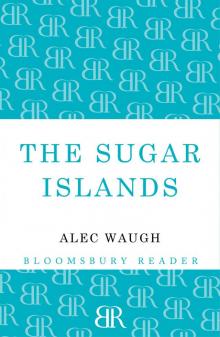 The Sugar Islands
The Sugar Islands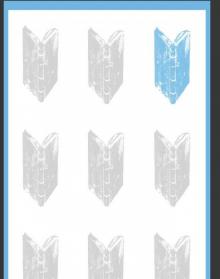 No Truce with Time
No Truce with Time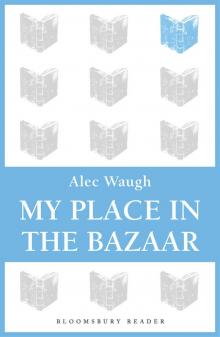 My Place in the Bazaar
My Place in the Bazaar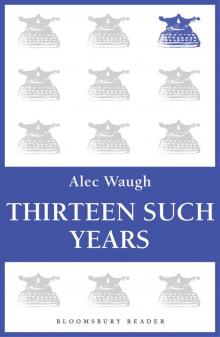 Thirteen Such Years
Thirteen Such Years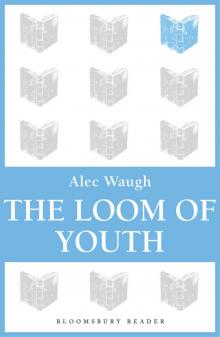 The Loom of Youth
The Loom of Youth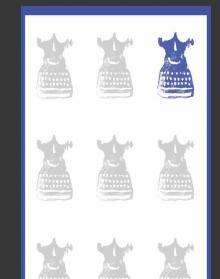 A Year to Remember
A Year to Remember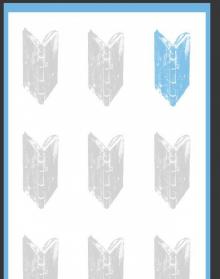 A Family of Islands
A Family of Islands Brief Encounter
Brief Encounter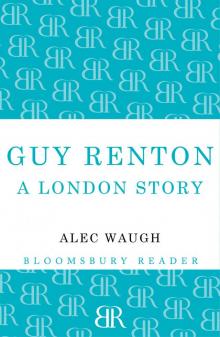 Guy Renton
Guy Renton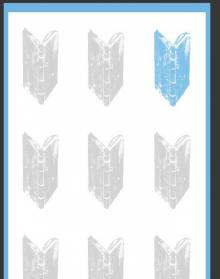 So Lovers Dream
So Lovers Dream His Second War
His Second War My Brother Evelyn & Other Profiles
My Brother Evelyn & Other Profiles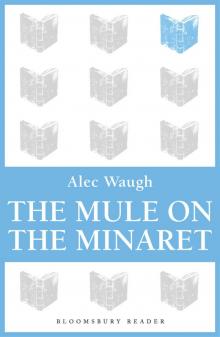 The Mule on the Minaret
The Mule on the Minaret Sir!' She Said
Sir!' She Said Nor Many Waters
Nor Many Waters The Fatal Gift
The Fatal Gift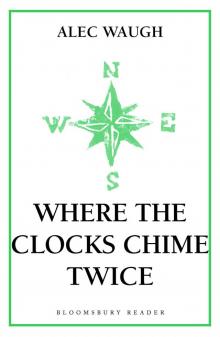 Where the Clocks Chime Twice
Where the Clocks Chime Twice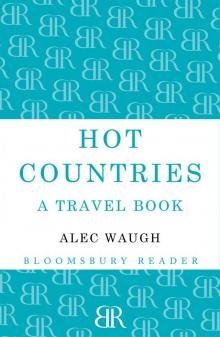 Hot Countries
Hot Countries Unclouded Summer
Unclouded Summer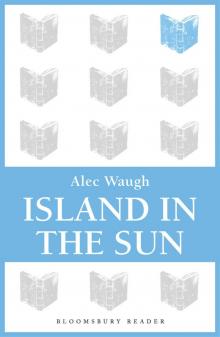 Island in the Sun
Island in the Sun